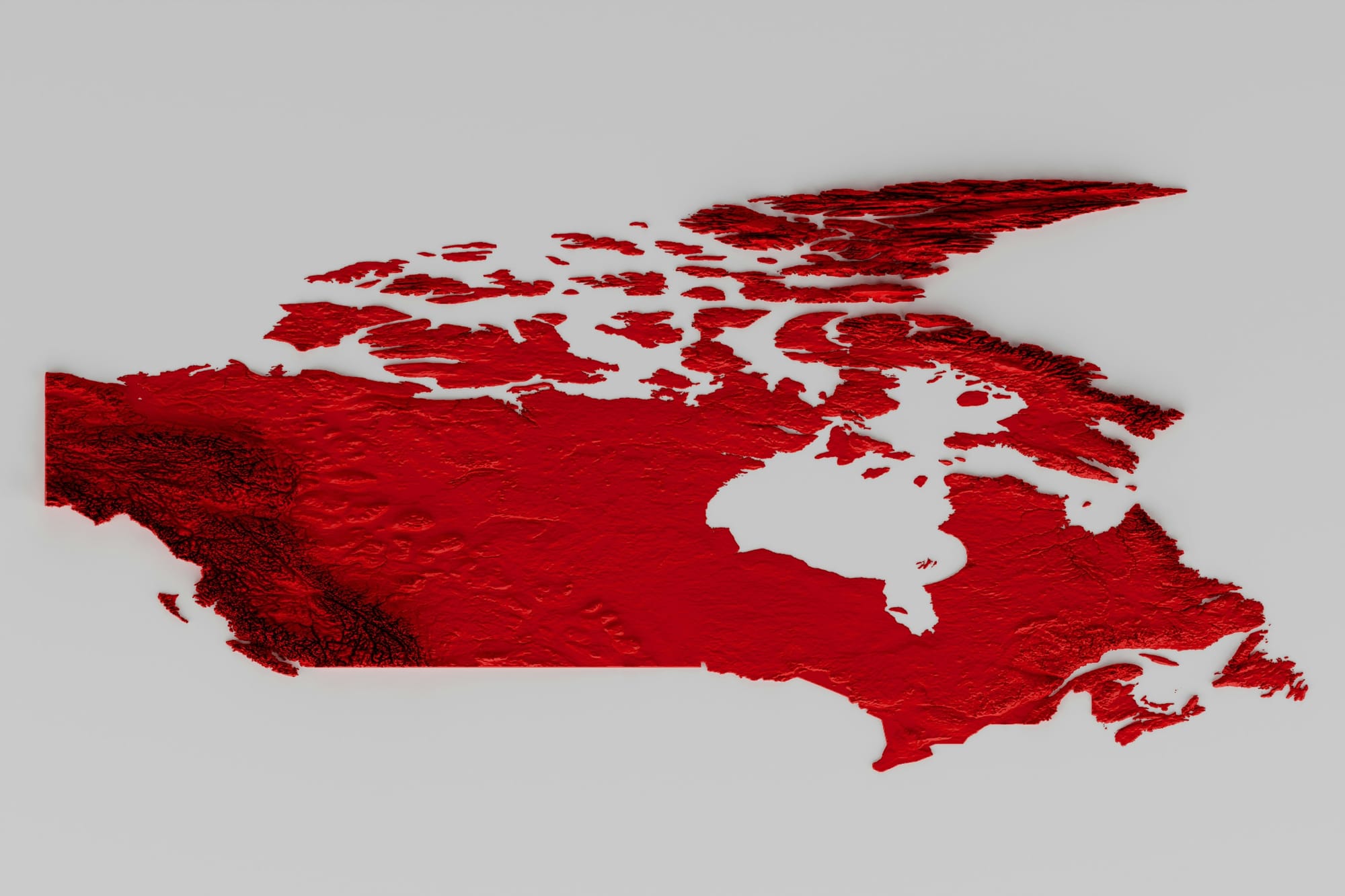The Federation as System
Canada is not one economy but a constellation of them; thirteen experiments in converting geography into strategy.
Each province and territory channels the same national endowments, resources, labour, credibility, through a different institutional grammar.
Together they form a federal equilibrium that balances diversity with interdependence: volatility in the West absorbed by prudence in the East; demographic strain offset by immigration surges in the Centre; extraction at the periphery sustaining services at the core.
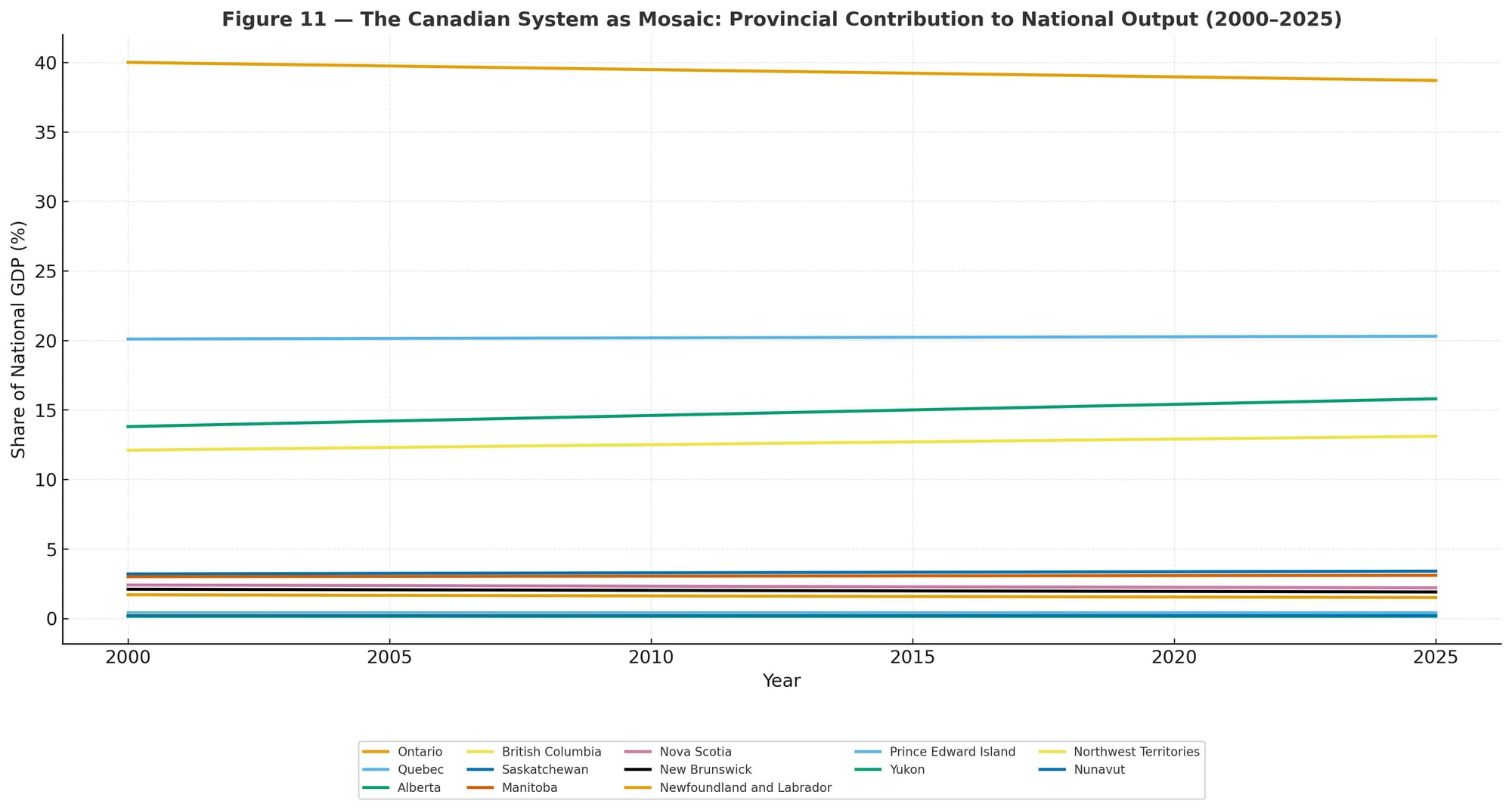
British Columbia — Housing Wealth and Tradable Erosion
B.C. is the purest expression of the asset economy.
Since 2000, the province’s GDP per capita has grown less through productivity than through the inflation of urban land and the magnetism of migration. The Vancouver region operates as a global liquidity node, absorbing foreign capital, recycling it into construction and consumption, and exporting scarcity.
Port logistics, film, and technology form islands of tradable strength, yet each is anchored by the same constraint: cost gravity. Median housing prices exceed eight times median income, and commercial rents now rival London’s. The effect is a structural tax on innovation, forcing young firms to leave just as they reach scale.
Policy oscillates between supply-side acceleration and fiscal restraint, yet the deeper challenge is psychological: prosperity has become a measure of possession rather than production. B.C. lives comfortably within the late-cycle paradox, rich in assets but with limited leverage to renew them.
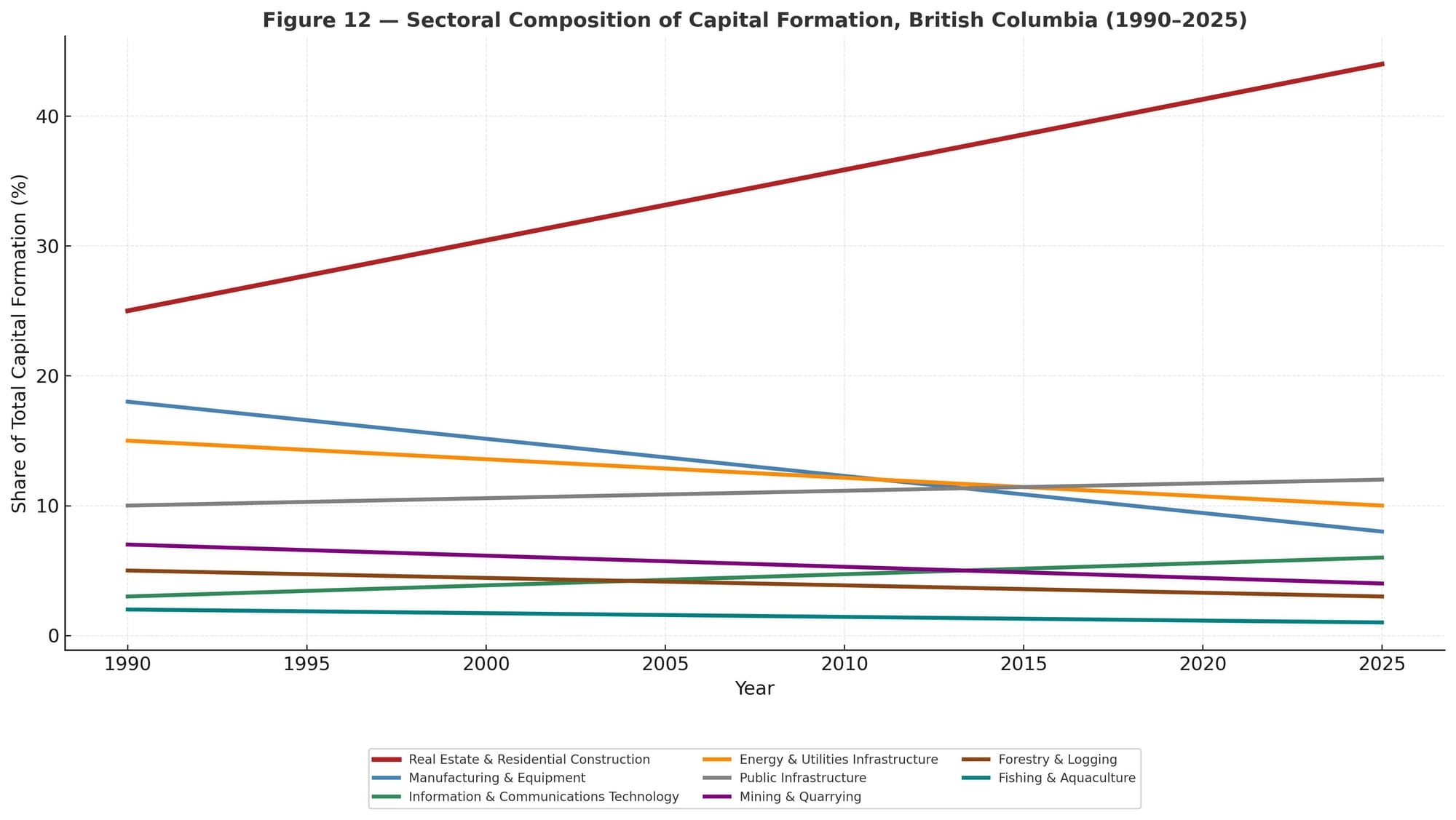
Alberta — Energy Republic at a Crossroads
Alberta remains Canada’s productivity champion in absolute output per worker; its volatility rivals its strength. The province’s capital stock is the nation’s most advanced, yet its fiscal base the most fragile.
High-investment resource cycles generate bursts of employment and revenue followed by rapid contraction. When oil exceeds ninety dollars per barrel, Alberta rivals small European nations in GDP per capita; when prices fall, deficits return overnight. This rhythm has created a collective memory of both boom and grievance.
Through the 2020s, diversification turned toward petrochemical upgrading, hydrogen, and digital energy management. The opportunity is genuine yet bounded; success depends on infrastructure integration with neighbouring provinces that political rhetoric often resists.
Alberta’s long-term balance will hinge on its capacity to evolve from commodity sovereignty to technological leverage, converting engineering expertise into exportable systems rather than raw output.
Saskatchewan — Efficiency without Diffusion
Saskatchewan illustrates the productivity-through-specialization model: narrow focus, high return, limited spillover. Potash, grain, and energy extraction anchor GDP; automation has raised output per worker faster than in any province except Alberta.
Yet the same efficiency confines expansion. Manufacturing linkages remain thin, and innovation ecosystems are underdeveloped. Beyond the resource corridors, service productivity has stalled. The province’s challenge is diffusion — transforming resource competence into general capability.
Infrastructure investment in transport and digital connectivity offers one bridge; immigration and urbanization offer another. If these converge, Saskatchewan could emerge as the federation’s quiet success story, a template for mid-scale resilience.
Manitoba — Balanced Mid-Cycle Stability
Manitoba represents Canada’s equilibrium state.
Hydroelectric abundance provides cheap energy and export revenue; a diversified industrial base smooths volatility. Unemployment stays among the lowest in the country, yet growth seldom excites.
This moderation is both virtue and risk. With limited boom sectors, investment momentum depends on public infrastructure and Crown corporations. Private capital perceives safety, not opportunity.
Still, the province’s demographic stability, modest housing costs, and manageable debt make it a fiscal anchor for the federation. In an era of extremes, Manitoba’s quiet competence may prove its greatest comparative advantage.
Ontario — Scale and Cost Gravity
Ontario is the imperial core of Canada’s economy: one-third of national GDP, one-quarter of population, and a dense web of finance, manufacturing, and services. Its problem is not capacity but congestion.
Manufacturing has revived through electric-vehicle investment and U.S. supply-chain realignment, yet productivity per dollar of capital has declined. Infrastructure strain, transit, housing, energy grids, absorbs the gains. Toronto’s housing costs rival global mega-cities; median rents consume over 35 percent of disposable income.
Fiscal policy attempts to reconcile contradictory demands: affordability relief for households, incentives for business, balanced budgets for investors. The outcome is incrementalism. Ontario remains indispensable but increasingly inefficient, a jurisdiction where every reform must first navigate the weight of its own centrality.
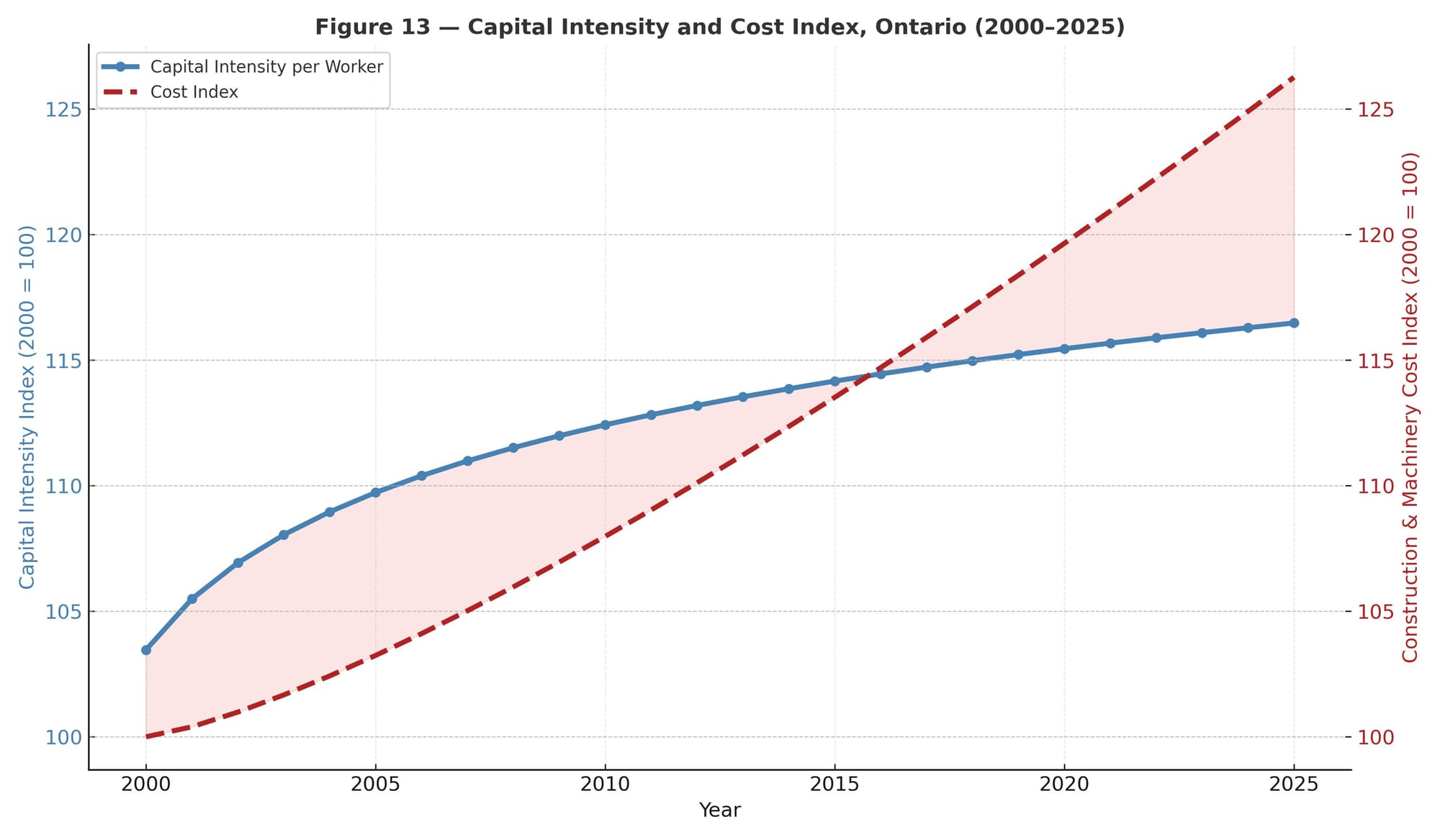
Québec — Strategic Sovereignty
Québec operates under a distinct social contract: growth through coordination. Public ownership, industrial policy, and linguistic solidarity combine into a model of state-directed capitalism that has delivered consistent productivity gains relative to the national average since 2015.
Hydro-Québec’s surplus powers low-carbon industry; aerospace and AI sectors export high-value knowledge; fiscal prudence maintains investor confidence. The system’s risk lies in demographic arithmetic: aging labour, low fertility, and migration management complexity.
Québec’s next frontier is technological sovereignty, retaining command over data, energy, and cultural industries in a digitized global order. Its model demonstrates that cohesion can substitute for scale, until cohesion itself requires renewal.
New Brunswick — Logistics and Energy Interchange
Small, export-oriented, and often underestimated, New Brunswick sits at Canada’s Atlantic hinge. The Irving industrial complex, Saint John port, and cross-border energy infrastructure connect continental trade with Atlantic routes.
Productivity performance improved modestly after 2015, driven by manufacturing modernization and IT services. Yet fiscal capacity remains limited; debt ratios restrict capital investment. The province’s comparative advantage lies in connectivity, its ability to serve as corridor rather than destination. As North America re-routes supply chains toward shorter, regional loops, New Brunswick’s geography may convert from periphery to platform.
Nova Scotia — Knowledge Capital, Physical Constraint
Halifax anchors Atlantic Canada’s intellectual economy, universities, naval contracts, digital start-ups. Human capital is abundant; physical space and affordability are not.
Productivity gains accrue in specialized clusters but dissipate across the wider labour market. Public employment and healthcare dominate; private investment trails the national mean. The province illustrates the service-density trap, where an educated workforce sustains consumption but struggles to scale creation.
Renewal depends on infrastructure that matches ambition: port modernization, green shipbuilding, and regional broadband. If these materialize, Nova Scotia could pivot from educated stability to exportable innovation.
Prince Edward Island — Micro-Economy, Macro Adaptability
PEI thrives on precision. Its bioscience corridor and agri-food exports deliver outsize returns for a population under 200,000. Government and academia collaborate effectively; immigration offsets demographic decline.
Yet scale imposes limits. R&D budgets fluctuate with federal cycles, and energy logistics constrain manufacturing. The island’s strategic goal is resilience through specialization, remaining small but globally connected. As digital trade lowers barriers, PEI’s model of niche productivity could become a national micro-template: local competence leveraged through global networks.
Newfoundland and Labrador — The Resource Hangover
Few regions illustrate the boom-bust arc more vividly.
Offshore oil transformed Newfoundland’s finances in the 2000s, halving unemployment and eliminating deficits. Then prices fell, projects slowed, and public debt soared beyond 40 percent of GDP.
Despite recent wind and hydrogen prospects, fiscal recovery is uneven. Population decline compounds cost pressures; infrastructure maintenance absorbs new revenue.
The province remains rich in opportunity but short on fiscal runway. Its next act depends on turning extraction capacity into energy intelligence, applying offshore expertise to renewable grids and marine logistics.
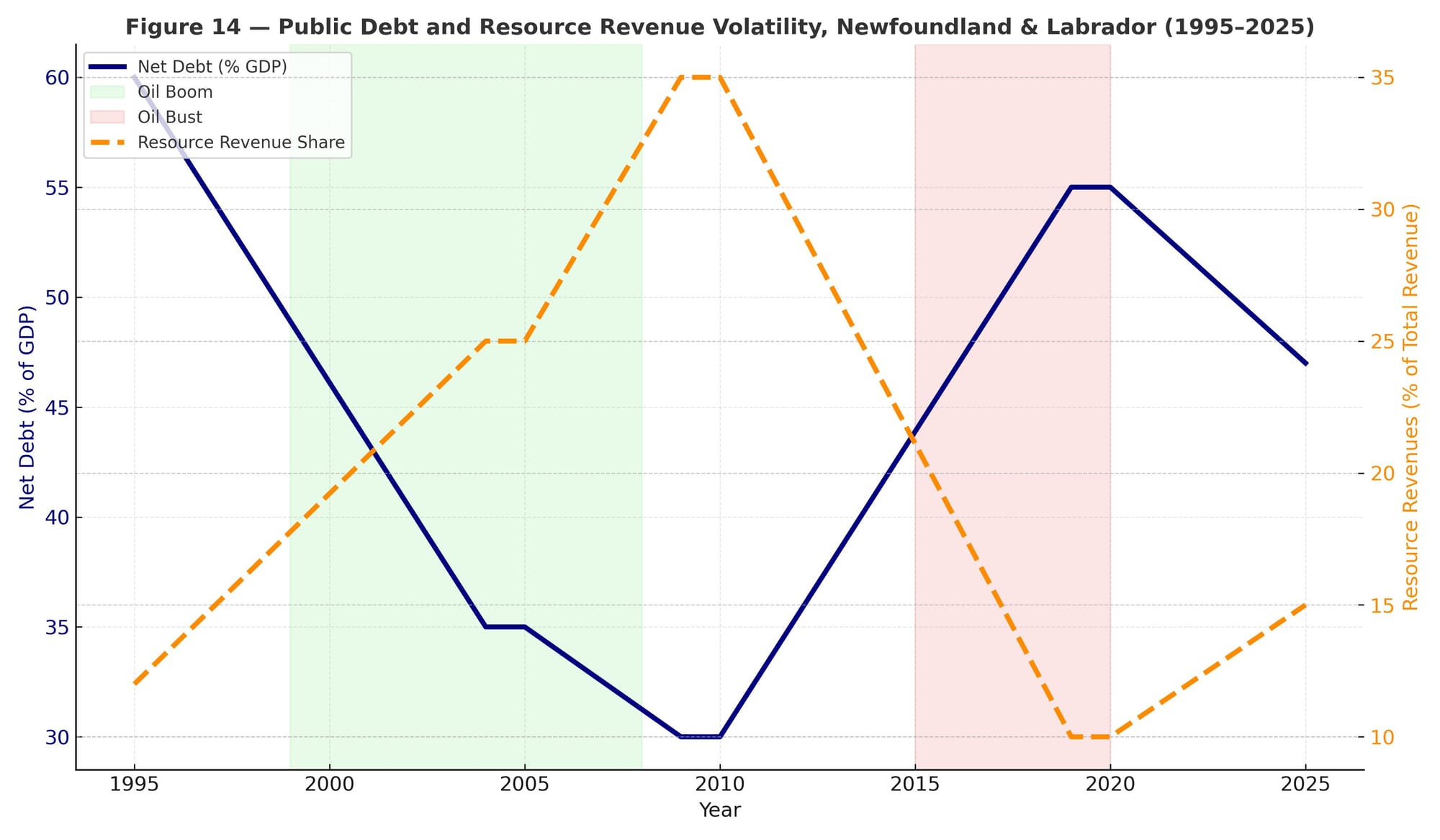
Yukon — Frontier Acceleration
The Yukon stands at the opposite pole of scale: small base, high potential.
Mining and tourism dominate GDP; new investments in critical minerals place the territory at the forefront of North American supply-chain strategy.
Infrastructure deficits remain severe, energy, transport, housing, but governance flexibility allows rapid adaptation. The territory’s challenge is to convert frontier dynamism into institutional durability before the next commodity downturn. If managed prudently, Yukon could evolve from outpost to prototype for northern modernization.
Northwest Territories — Distance as Cost Structure
NWT’s productivity numbers fluctuate violently because geography dictates economics.
Every kilometre of distance adds exponential cost. Mining, the backbone industry, confronts depletion and high logistics expense; public employment sustains services.
Policy focus has shifted toward all-season road networks and digital connectivity, projects that redefine possibility rather than margin. For the territories, productivity means access.
Once connection costs fall, latent capability could surface rapidly.
Nunavut — Frontier of Sovereignty
Nunavut represents both Canada’s most fragile and most strategic economy. Resource potential in iron and rare earths coexists with infrastructure scarcity and social strain. Per-capita GDP swings with extraction cycles; cost of living remains triple the southern average.
Yet Nunavut’s long-term significance is geopolitical. Melting sea routes and global competition for Arctic presence place the territory at the intersection of climate policy, Indigenous governance, and sovereignty assertion.
Its economic evolution will define Canada’s credibility as a northern power.
Investment here is not only fiscal, it is constitutional.

Synthesis — A Nation of Counterweights
Across provinces and territories, the pattern is recursive: each jurisdiction compensates for another’s vulnerability. The West supplies fiscal volatility and export dynamism; the Centre provides scale and stability; the East offers institutional loyalty and social capital; the North delivers strategic leverage.
This arrangement yields resilience at the national level — but also inertia. When energy booms, housing booms too; when productivity stalls, transfers smooth the pain. The federation’s genius is its ability to average excellence and mediocrity into equilibrium.
Its risk is that equilibrium becomes ideology.

Transition to Section IV
Confidence holds the mosaic together.
Behind every provincial story lies the same national question: can a country built for abundance adapt to maturity without losing faith in its own design?
The next section explores that binding force: how credibility forms, peaks, renews, and why the management of belief has become the final infrastructure of modern governance.
